This article was written exclusively for Investing.com
- Sugar trending higher in medium-term
- Subsidies distort the supply and demand fundamentals
- Free-market sugar is all about Brazil
- Sugar is input in Brazilian biofuel
- CANE ETF tracks portfolio of sugar futures contracts
World sugar futures trade on the Intercontinental Exchange. Since the late 1960s, the sweet commodity has been as low as 1.5 cents per pound and as high as 66 cents.
In 1985, when I was a junior options trader at a leading commodity trader, the price of the sweet commodity fell below 3 cents a pound. I suggested a long position as the risk-reward became compelling. Risking less than 3 cents to buy a commodity that was 22 times higher in the 1970s seemed logical. My boss, a brilliant options trader, asked me why we should buy anything that restaurants give away for free? I responded that it was historically cheap and he said he was a buyer at zero.
Sugar can be a highly volatile soft commodity, and the weather in critical growing regions impacts annual supplies. Meanwhile, the demand has been increasing for two reasons. First, the global population rises by around 20 million people each quarter, increasing sugar’s addressable market, as it is an ingredient in many foods. Second, sugar’s role as an input in biofuel has grown.
Sugar comes from sugarcane from tropical climates and sugar beets from more temperate areas. At around the 19 cents per pound level in June 2022, the price of sugar has been trending higher since April 2020, when it had reached a low of 9.05 cents per pound.
Sugar Trending Higher In Medium-Term
World sugar futures reached a low in April 2020 and made higher lows and higher highs until late 2021.
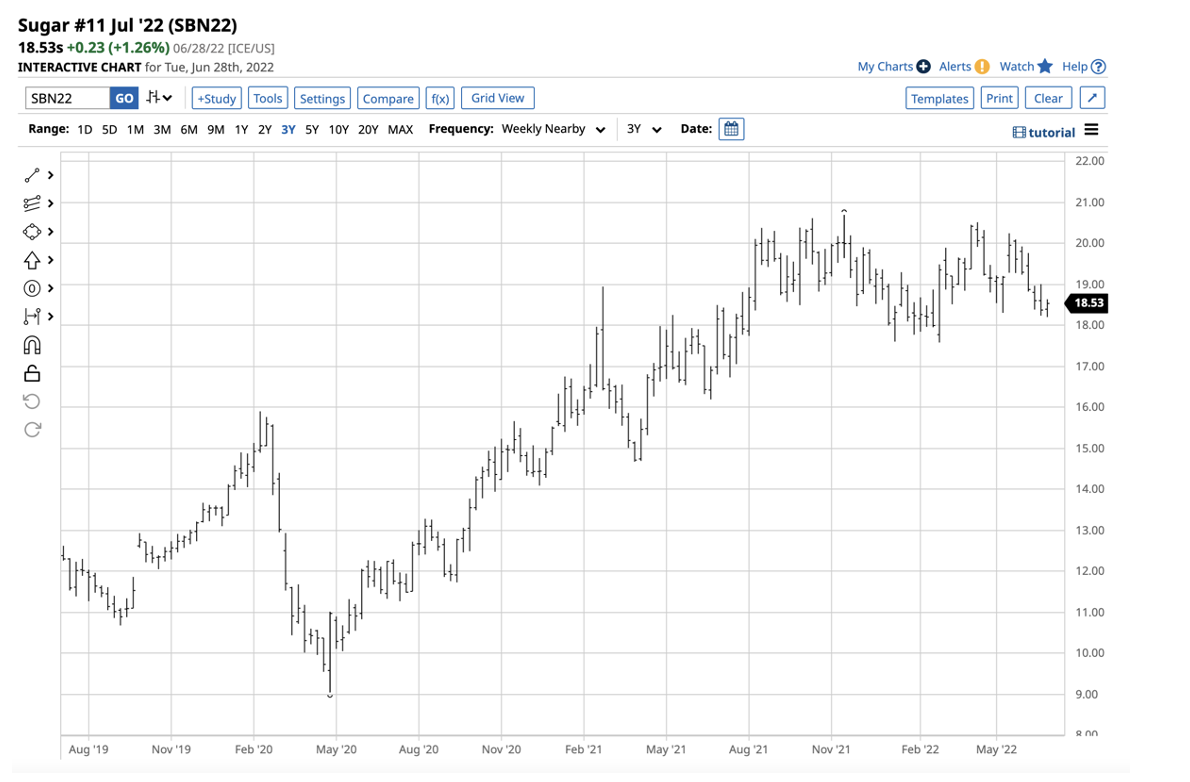
Source: Barchart
The chart highlights the rise to 20.69 in mid-November 2021, the highest price since February 2017. Since then, sugar futures have traded in a range between 17.60 and 20.51 cents per pound. While the trend remains bullish, the price action stalled as sugar has been consolidating over the past seven months.
Sugar Is Odd Commodity: Subsidies Impact Prices, Distorts Supply And Demand Fundamentals
Sugar is a critical ingredient in most foods, and governments worldwide subsidize its production. Sugar tends to be an extremely volatile agricultural product, so governments support producers to ensure production when prices decline. The EU and the U.S. subsidize sugar prices. While the free-market sugar price settled at the 18.53 cents per pound on June 28, U.S. subsidized sugar was trading at a substantial premium.
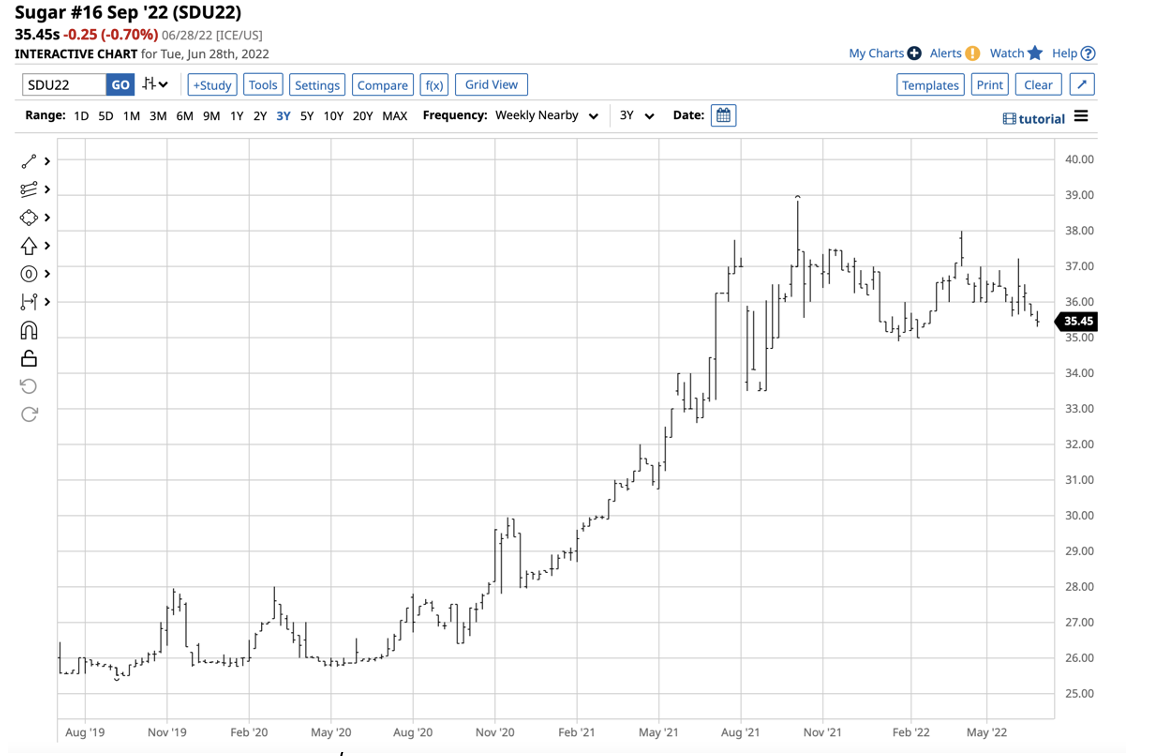
Source: Barchart
At 35.45 cents on June 28, the subsidized sugar was at a 91.3% premium to the #11 world sugar price.
Subsidies distort worldwide prices as they reflect government policies instead of supply and demand fundamentals.
Free-Market Sugar Is All About Brazil
Brazil is the world’s leading sugarcane producer and exporter, and the price moves higher or lower with the free-market sugar price.
The weather conditions and other factors in Brazil dictate each year’s sugar crop. Brazil’s climate supports sugar production, and Brazil is also the leading producer and exporter of Arabica coffee beans and oranges. Free-market sugar, Arabica coffee and frozen concentrated orange juice (FCOJ) are three of the five soft commodities that trade on the Intercontinental Exchange. While the pricing benchmark on ICE is the U.S. dollar, local output costs are in Brazilian real, making changes in the U.S. dollar versus the Brazilian real a factor for sugar, coffee, and FCOJ prices. A higher real tends to support higher soft commodity prices.

Source: Barchart
The chart of the real versus the dollar shows a bullish trend of higher lows and higher highs over the past two years. Over the period, coffee, FCOJ, and sugar prices have risen to multi-year highs.
Sugar Is Input In Brazilian Biofuel
In the U.S., corn is the primary ingredient in ethanol. The U.S. ethanol mandate for gasoline is one of the factors pushing corn prices higher over the past months as gasoline prices rose to a new all-time high. In Brazil, most cars run on ethanol, but it is sugar that is the primary input in Brazilian biofuel. Rising ethanol prices have supported sugar as domestic demand rises and the amount available for export declines.
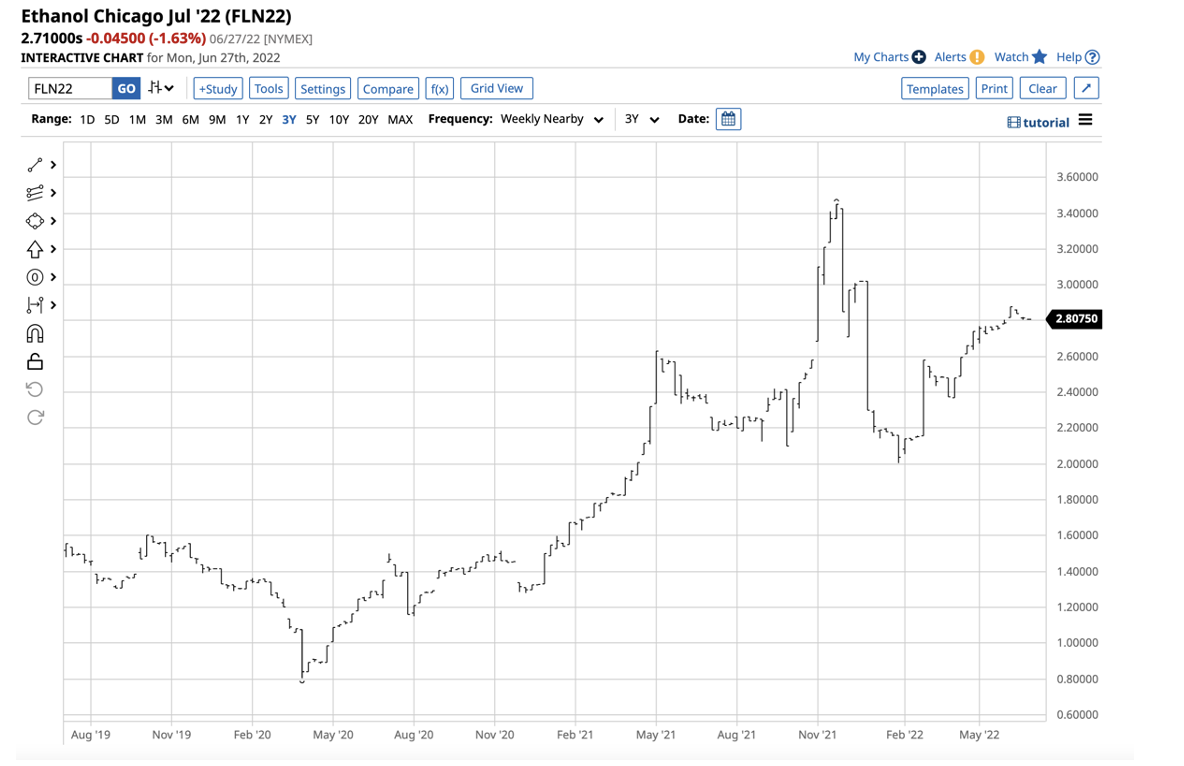
Source: Barchart
The chart shows the rise in Chicago ethanol swaps from 80.50 cents per gallon wholesale in March 2020 to the $2.7100 level on June 28. The bullish price action in the ethanol market supports higher sugar prices. While sugar is trading at around double the price of the April 2020 low, ethanol is over three times higher. Ethanol’s price supports sugar.
CANE ETF Tracks Portfolio Of Sugar Futures Contracts
The most direct route for a risk position in the world sugar market is via the futures and futures options on the Intercontinental Exchange. The Teucrium Sugar ETF (NYSE:CANE) provides an alternative as it tracks a portfolio of actively traded sugar futures.
At $9.27 per share on June 28, CANE had $33.522 million in assets under management. The ETF trades an average of 110,959 shares each day and charges a 1.88% management fee. CANE’s fund summary states:
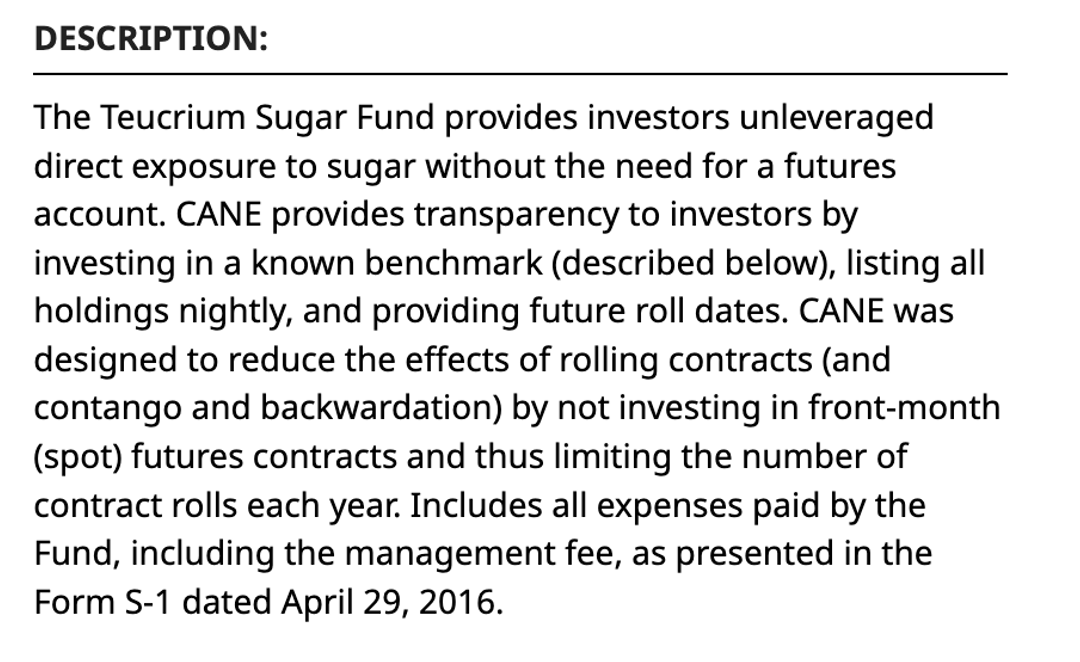
Source: Barchart
CANE holds three sugar futures contracts to minimize the roll risks. Since the most volatile price action tends to occur in the nearby futures contract, CANE tends to underperform the sugar futures market on the upside and outperform during price corrections.
The most recent rally in the July ICE sugar futures arena took the price from 18.30 cents on May 12 to 20.24 cents on May 17, or 10.6% higher. The futures declined to 18.20 cents on June 27, a 10.08% drop.
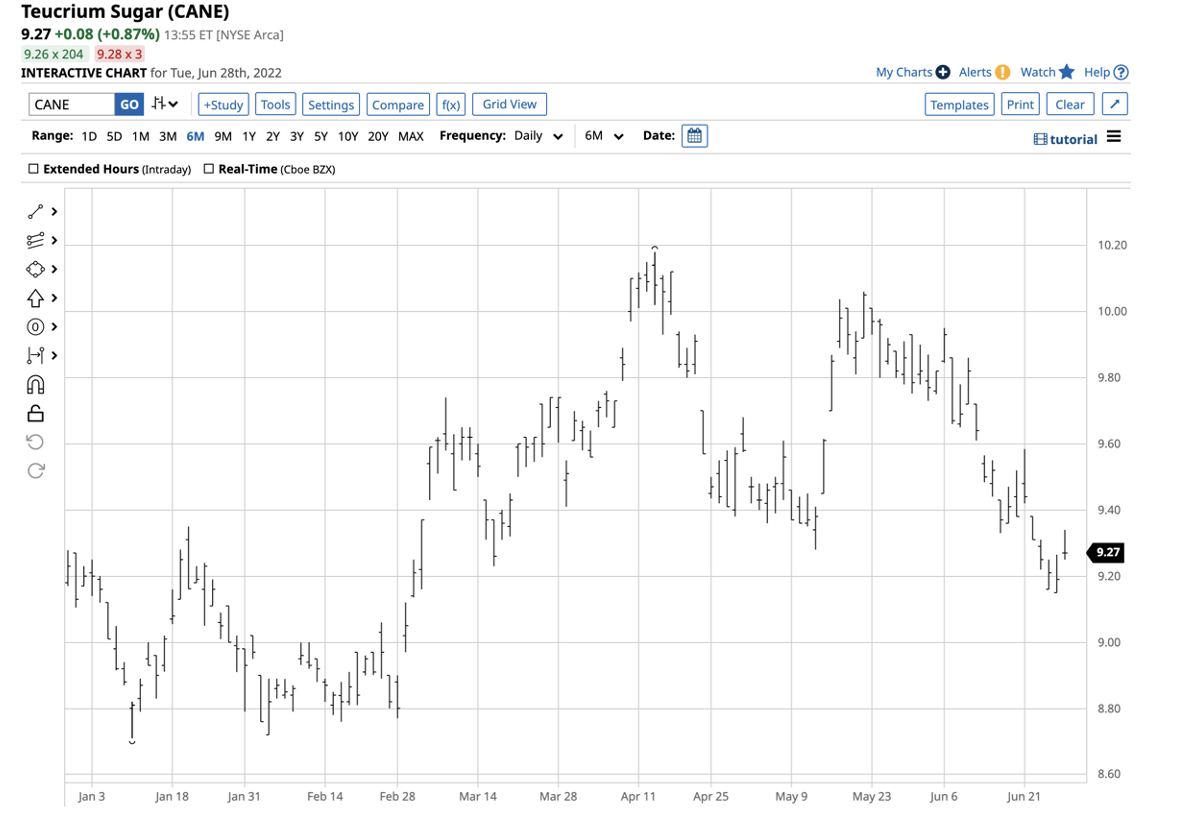
Source: Barchart
Over the same period, CANE rose from $9.28 to $10.06 per share, or 8.4%, as the ETF underperformed the July ICE sugar futures contract on the upside. The ETF fell from $10.06 to $9.15 per share, or 9.05%, as it slightly outperformed the futures on the downside. The CANE ETF is only available during the U.S. stock market’s hours and sugar trades before stocks open in the morning, creating the potential for differences when sugar reaches highs or lows before CANE trades.
I favor buying sugar on price weakness as the trend in ethanol, gasoline, and the Brazilian real remain higher. Sugar is a commodity that fuels the world nutritionally and also when it comes to power.
***
Looking to get up to speed on your next idea? With InvestingPro+ you can find
Any company’s financials for the last 10 years
Financial health scores for profitability, growth, and more
A fair value calculated from dozens of financial models
Quick comparison to the company’s peers
Fundamental and performance charts
And a lot more. Get all the key data fast so you can make an informed decision, with InvestingPro+. Learn More »
